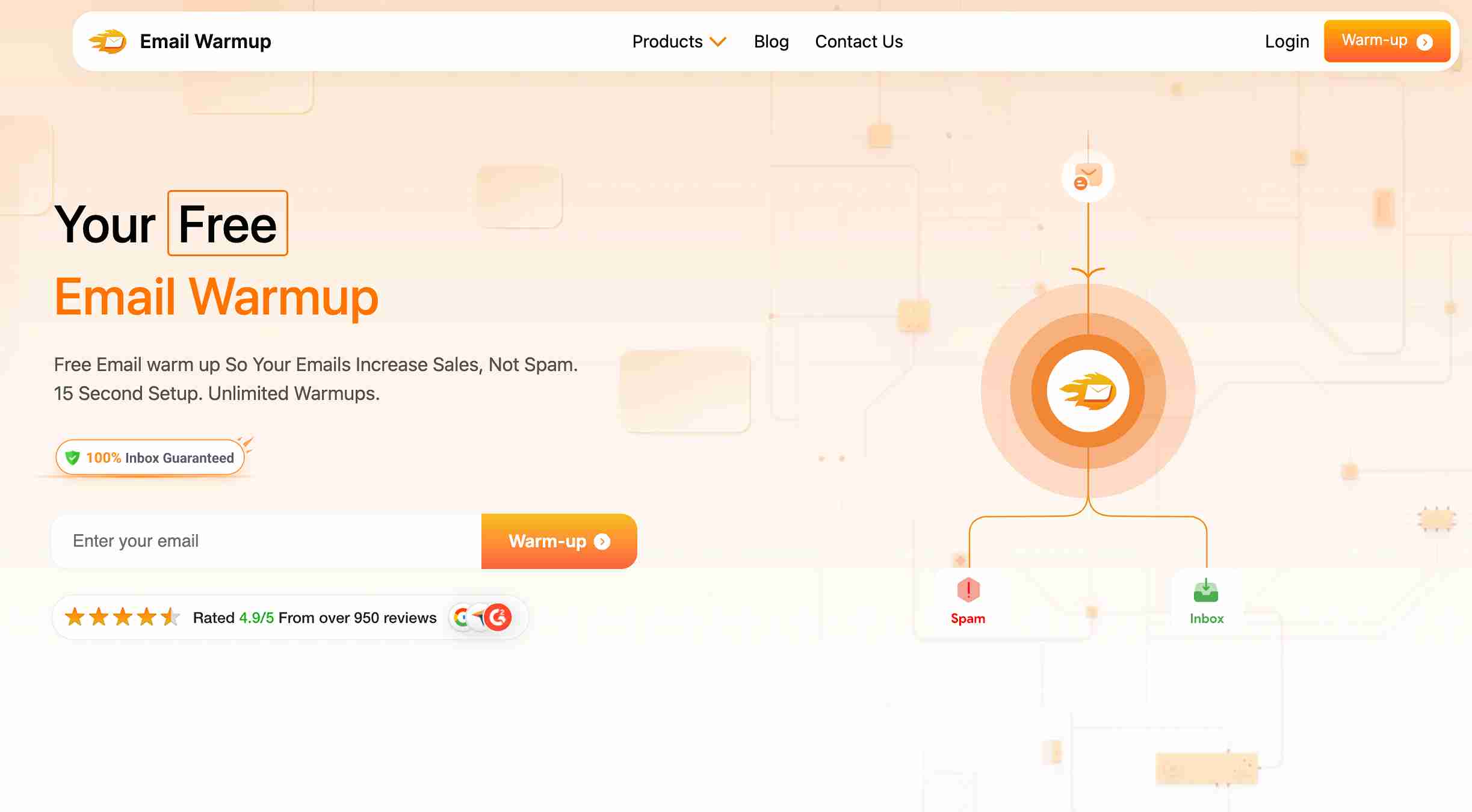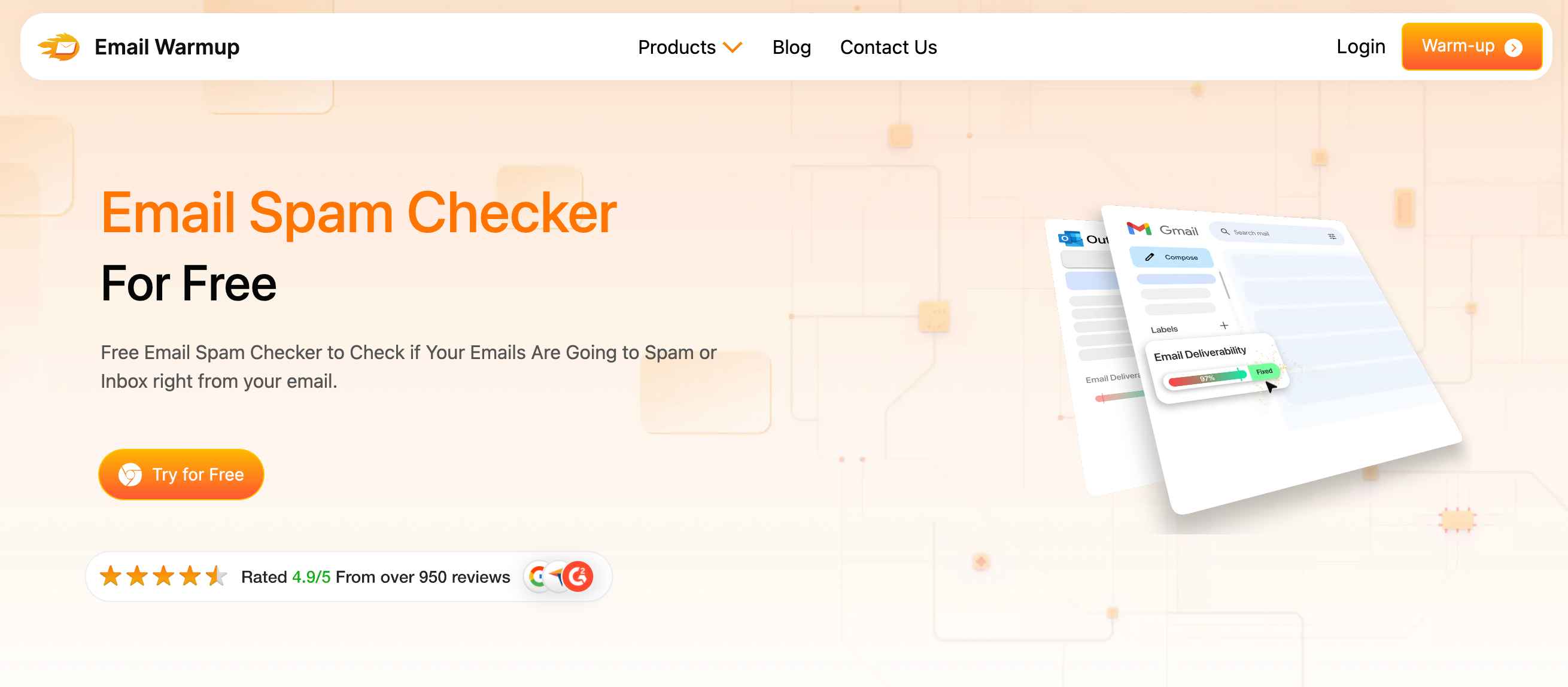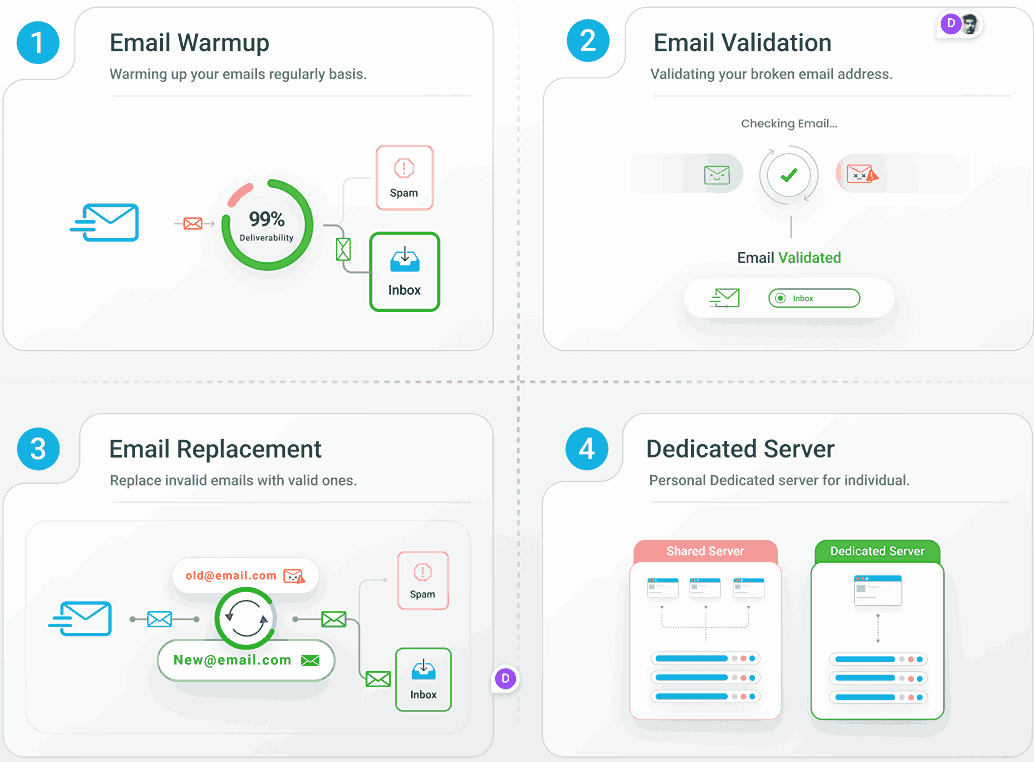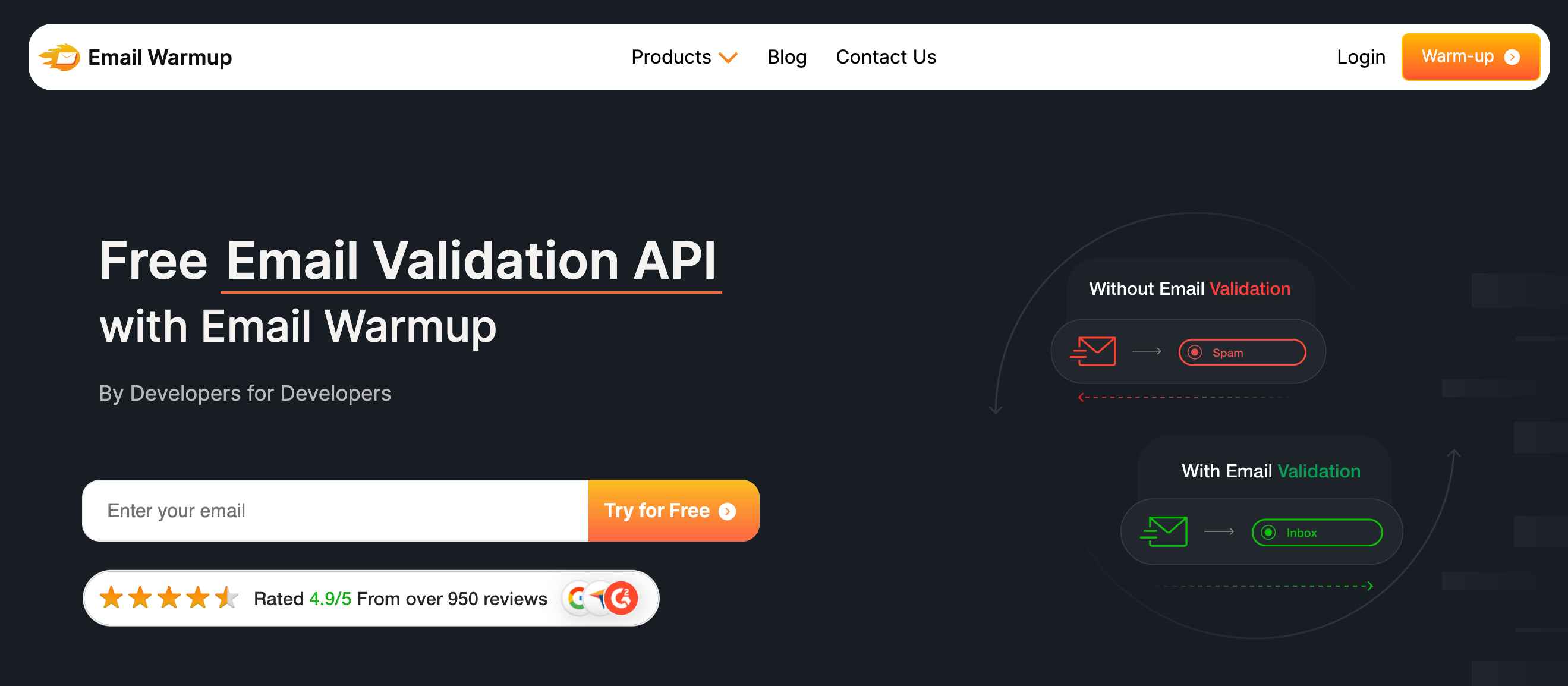
You craft the perfect email. It’s personal, persuasive, and maybe even a little clever. Then you hit send and wait. And wait some more, but nothing comes back.
- Did it end up in spam?
- Was your message intentionally ignored?
- Or did they actually read it and just decide not to respond?
If you’ve ever found yourself staring at your inbox wondering whether someone actually opened your email, you’re definitely not alone.
Every business owner, freelancer, and sales professional has asked this same question.
As an email deliverability consultant who has helped hundreds of businesses fix their deliverability issues, I’ve prepped this guide to show you:
- How to see if someone read your email
- The methods that top performers use to track email opens
- Simple built-in tools to more advanced tracking techniques
- The ethical and privacy concerns involved with the notion of email tracking
- And how important is fixing your deliverability before you even worry about tracking
Let’s dive in!
A word of advice
You need first to confirm whether your email is actually delivered to their inbox, rather than being sent to spam, before worrying if they read it.
Because if it’s sent to their spam or promotions, there’s no point. Fixing deliverability is the priority before getting read.
The best way to improve your email deliverability is to warm up your email domain before launching an email marketing campaign.
- It’s easy
- Tried and tested
- Fully automated
- And highly impactful

You can use this email warmup tool to build trust with inbox providers.
Or, if you’d like to learn more, you can speak with an email deliverability consultant for free.
Schedule your consultation call
Now let’s get back to the article.
Can you use built-in read receipts to track when emails are opened?
Read receipts seem like the most straightforward solution. After all, why not just ask directly?
But they come with some serious limitations that make them less reliable than you might think.
Gmail read receipts (business accounts only)
If you’re using Google Workspace (Gmail for business or school), you can request a read receipt when sending emails. When someone opens your message, Gmail tries to send you a notification.
Here’s how to set it up:
- Your admin must first enable read receipts in Workspace settings
- Compose your email as usual
- Click the three dots and select “Request read receipt.”
Now, the problem is that recipients can simply decline to send the confirmation.
Even if someone read your entire message, you might never know about it. It becomes a game of trust and personal settings.
Outlook read receipts
Microsoft Outlook gives you two types of notifications that work differently:
- Delivery receipt confirms your email reached their inbox
- Read receipt confirms they actually opened it
You’ll find these options under the “Options” tab when writing your email. But just like Gmail, recipients can ignore or disable the prompt completely.
Why read receipts often fail
Built-in read receipts have several major drawbacks that limit their usefulness:
- Recipients often decline or block them automatically
- They can create awkwardness or feel invasive to recipients
- A “read” confirmation doesn’t guarantee they actually read your content
- They don’t work consistently across different email clients or mobile apps
This leaves you guessing whether your message truly landed or got lost in the digital noise.
Do tracking pixels actually work for email monitoring?
If you don’t want to ask permission, you need a different approach.
Tracking pixels work like digital spies hiding inside your emails, giving you information without requiring any action from the recipient.
What exactly is a tracking pixel?
A tracking pixel is a tiny, invisible 1×1 image embedded in your email’s HTML code.
When someone opens your email, that pixel loads from a remote server, which triggers a notification back to you.
Think of it as planting a silent witness inside your message. The moment someone views it, you get detailed information:
- What device they used
- Exactly when it was opened
- How many times they opened it
- Geographic location of the reader
This technology powers most professional email tracking tools behind the scenes.
Creating your own HTML image tags
If you know basic coding, you can manually insert an HTML image tag to detect reads:
html
<img src="https://yourserver.com/tracker.jpg" width="1" height="1" style="display:none;" />It’s completely invisible to recipients but highly effective for tracking. However, this approach walks a fine ethical line that you need to consider carefully.
Benefits and risks of pixel tracking
Tracking pixels offer powerful capabilities but come with significant limitations:
The advantages could be:
- No user confirmation needed
- Real-time notifications when emails are opened
- Tracks multiple opens across different devices
Risks include:
- Can feel invasive if recipients discover it
- May trigger spam filters if used incorrectly
- Blocked by Apple Mail, Gmail, and other privacy-focused clients
Using pixel tracking requires careful balance. One wrong move and you could damage trust with your audience.

Also, you can use an email spam checker before sending to ensure your content doesn’t trigger spam filters.
Are Chrome extensions effective for Gmail and Outlook?
You don’t need coding skills or server configuration to track emails effectively.
Chrome extensions handle everything automatically with just a few clicks, and recipients typically never know they’re being monitored.
How Chrome extensions operate
These tools automatically inject tracking pixels into your outgoing emails. When someone opens your message, you receive a real-time notification without needing to set up anything.
Most extensions show simple visual indicators:
- Hover over the indicators to see timing, location, and frequency details
- One checkmark means your email was sent
- Two checkmarks mean it was opened
It’s essentially plug-and-play email tracking.
Popular Chrome email tracking tools
Several extensions have gained popularity among professionals:
| Extension | Key features | Best for | Pricing |
| Mailtrack (formerly Mailsuite) | Real-time alerts, Gmail-native integration | Individuals wanting simple tracking in Gmail | Free (with optional upgrades) |
| MailTag | Clean UI, follow-up automation, tailored for solo users | Freelancers and sales reps | Paid (with free trial) |
| cloudHQ Email Tracker | Detailed logs, mobile & desktop tracking, integrates with Gmail | Gmail users needing full-device tracking | Freemium |
| Yesware | Sales templates, team dashboards, CRM sync | Sales teams and professionals | Paid plans (with team features) |
Each has its own strengths and weaknesses, but they all use the same core technology of tracking pixels through browser injection.
What you gain and risk with extensions
Chrome extensions offer convenience but aren’t foolproof solutions:
The benefits are:
- Easy setup process
- No technical skills required
- Many offer free plans for basic usage
- Works directly inside Gmail or Outlook web applications
The limitations are:
- Can be blocked by privacy settings
- Some tools add branded footers unless you upgrade to paid plans
- Results become inconsistent when recipients use image blockers or Apple Mail
These extensions are user-friendly but not completely reliable.
How do email automation platforms handle tracking?
When you’re sending hundreds of emails instead of just a few, manual tracking becomes impossible.
Email automation platforms solve this by tracking opens, clicks, and replies while optimizing your campaigns automatically.
What automation platforms actually do
These tools are built specifically for large-scale email operations. They handle cold outreach, follow-up sequences, and smart workflows that react based on how leads behave.
Rather than just tracking opens, they provide comprehensive email intelligence dashboards with detailed analytics.
Why they’re game-changers for businesses
Automation platforms give you capabilities that manual tracking simply can’t match:
- See exactly who opened your emails and when
- Split test subject lines, body copy, and calls-to-action
- Track clicks, replies, and unsubscribes across campaigns
- Send automatic follow-ups only when emails weren’t opened
Instead of wondering “Did they read it?” you get hard data to optimize every aspect of your email strategy.
Why automation fails without proper inboxing
A critical issue that many people overlook is that advanced tracking becomes ineffective if your emails end up in spam folders.

This is why combining automation platforms with a deliverability tool like EmailWarmup.com is essential, so you can:
- Validate email addresses and replace invalid ones
- Get expert support when deliverability issues arise
- Use dedicated IP addresses to protect your sender reputation
- Warm up your domain properly with unlimited warmup capabilities
If your emails aren’t reaching inboxes, you’re not tracking anything meaningful. And you’re definitely not converting leads into customers.
Can link tracking replace open tracking?
Sometimes open tracking simply doesn’t provide reliable data. Privacy settings might block pixels, or you might get false positive results that don’t reflect real engagement.
In these situations, following clicks gives you much more accurate information about genuine interest.
Understanding link tracking mechanics
Instead of tracking whether emails were opened, you track whether someone clicked links inside them. This works through special URLs that route through tracking servers before reaching your intended destination.
Why clicks are more reliable than opens
Click tracking offers several advantages over traditional open tracking:
- Provides clearer data for follow-up decisions
- Can trigger conditional logic in automation tools
- Can’t be faked by preloaded images (common in Apple Mail and Gmail)
- Represents genuine engagement since recipients actively did something
To put it simply, clicks don’t lie about engagement levels.
Using link tracking effectively
To get the most value from click tracking, follow these best practices:
- Add clear calls-to-action in your emails
- Use unique tracking links for each recipient when you need detailed individual data
- Monitor click-through rates to identify who’s genuinely engaging with your content
- Combine with EmailWarmup.com to ensure your links are actually seen instead of spam-filtered
It’s like reading between the lines, because clicks reveal much more than opens about real interest levels.
Is email tracking ethical and legal?
Email tracking can feel questionable when done wrong. You’re essentially monitoring someone’s behavior without their explicit consent, whether through read receipts or invisible pixels.
Privacy laws are evolving rapidly. Regulations like GDPR, CCPA, and Apple Mail Privacy Protection are making it harder and riskier to track opens without transparency.
But this doesn’t mean you should abandon tracking entirely. It means you need to approach it ethically and responsibly.
The golden rule is simple: don’t trick your audience.
If you’re tracking recipients, they should be aware of it and understand how it benefits them through improved content, more effective follow-ups, or faster support.
Best practice involves tracking the right information for the right reasons. Combine this with legitimate inbox placement tools so you’re not trying to analyze ghost data from spam folders.
When in doubt, respect their inbox the same way you want yours respected.
What are the main limitations of email tracking?
Even with all the available tools, email read tracking is far from perfect. Understanding these limitations helps you interpret your data more accurately and set realistic expectations.
| Issue | Why it’s a problem |
| Blocked by privacy tools | Apple Mail, Gmail, and others now block tracking pixels by default |
| Preloaded images create false opens | Some email clients auto-load emails to scan them, triggering opens without actual reads |
| Recipients decline read receipts | Especially common in Outlook and Gmail Workspace accounts |
| Device switching affects accuracy | Email marked opened on one device might be read on another |
| Mobile preview issues | Swiping past emails can mark them “read” without user interaction |
| Anti-tracking extensions | Tools like PixelBlock silently block all tracking attempts |
| Spam folder placement | If emails go to spam, tracking pixels may never load |
| Overreliance on open data | An open doesn’t guarantee attention, just that the email loaded |
Open data should never be your only success metric. It’s just one piece of a larger puzzle, not the complete picture of email performance.
When does read tracking backfire?
You might assume tracking is completely invisible, but recipients aren’t clueless about these techniques. When they do notice, it can seriously damage relationships and trust.
Some people view read receipts as obsessive behavior. Others see pixel tracking as creepy surveillance. In regulated industries, it can even trigger compliance issues.
Tracking backfire typically shows up as ignored replies, blocked emails, or even unsubscribes and spam complaints from annoyed recipients.
Use tracking with clear intent, not obsession
You’re gathering data to improve communication, not control it. Track to learn what works, not to monitor every single interaction.
Don’t rely solely on open data
Clicks, replies, and actual conversions are much harder to fake and provide more meaningful insights about engagement.
Prioritize inbox delivery first
If your emails don’t reach the inbox, none of your tracking efforts matter. This is why deliverability tools are essential for getting emails seen before they can be tracked.
How does proper deliverability improve tracking accuracy?
All the read receipts, tracking pixels, and automation in the world won’t help if your emails land in spam folders.
Before asking “Did they read it?” you need to ensure they actually received it in the first place.
Why does deliverability come before tracking
Tracking only activates when emails successfully reach inboxes.
If messages hit spam folders, nothing loads. No pixel fires, no clicks register, and you have no hope of measuring engagement.
Proper deliverability ensures your emails are positioned to perform and be tracked accurately.
Unlimited email warmup benefits
AI-powered email warmup services, such as EmailWarmup.com, gradually and safely enhance your sender reputation over time. This approach provides several key advantages:
- Your email account builds trust with major providers
- You avoid triggering spam filters from cold sending starts
- You can maintain warmup indefinitely, not just during initial setup
Inbox placement requires ongoing attention, not just one-time configuration.
Email validation and replacement services
Invalid email addresses destroy your sender score and skew tracking data.
For example, EmailWarmup.com not only removes bad addresses but also replaces them with verified ones, so you’re optimizing your list rather than just shrinking it.
Fewer bounces mean more emails reach inboxes, which leads to more accurate tracking data.

You can validate emails using our API before every major send.
Dedicated IP advantages
With a dedicated IP address, your sending reputation is entirely yours. You never suffer from shared IP addresses that other users have damaged through poor practices.
This gives you complete control over your email deliverability and tracking accuracy.
Expert deliverability support
When emails start landing in spam, you need real human experts who can diagnose and fix the problems. EmailWarmup.com provides unlimited consultations without upsells or gatekeeping.
When your business depends on email performance, your inbox delivery is your lifeline to customers.
Email tracking is most effective when your emails consistently appear in the recipient’s inbox, where they can be viewed.

Run a free email deliverability test to check if your emails are even reaching inboxes.
Frequently asked questions
Here are some frequently asked questions about this topic:
Use read receipts when available, or employ email tracking pixels for automatic detection. Link tracking can also confirm engagement when recipients click your calls-to-action.
Yes. Tracking pixels and automation tools can notify you when emails are opened, even without read receipt prompts. These work invisibly in the background.
No. Email tracking tools show if your sent messages were opened, but they don’t reveal if someone accessed your actual email account. That requires security monitoring, not engagement tracking.
Gmail only offers read receipts for Google Workspace accounts (business or school). Free personal Gmail accounts don’t have access to this feature.


